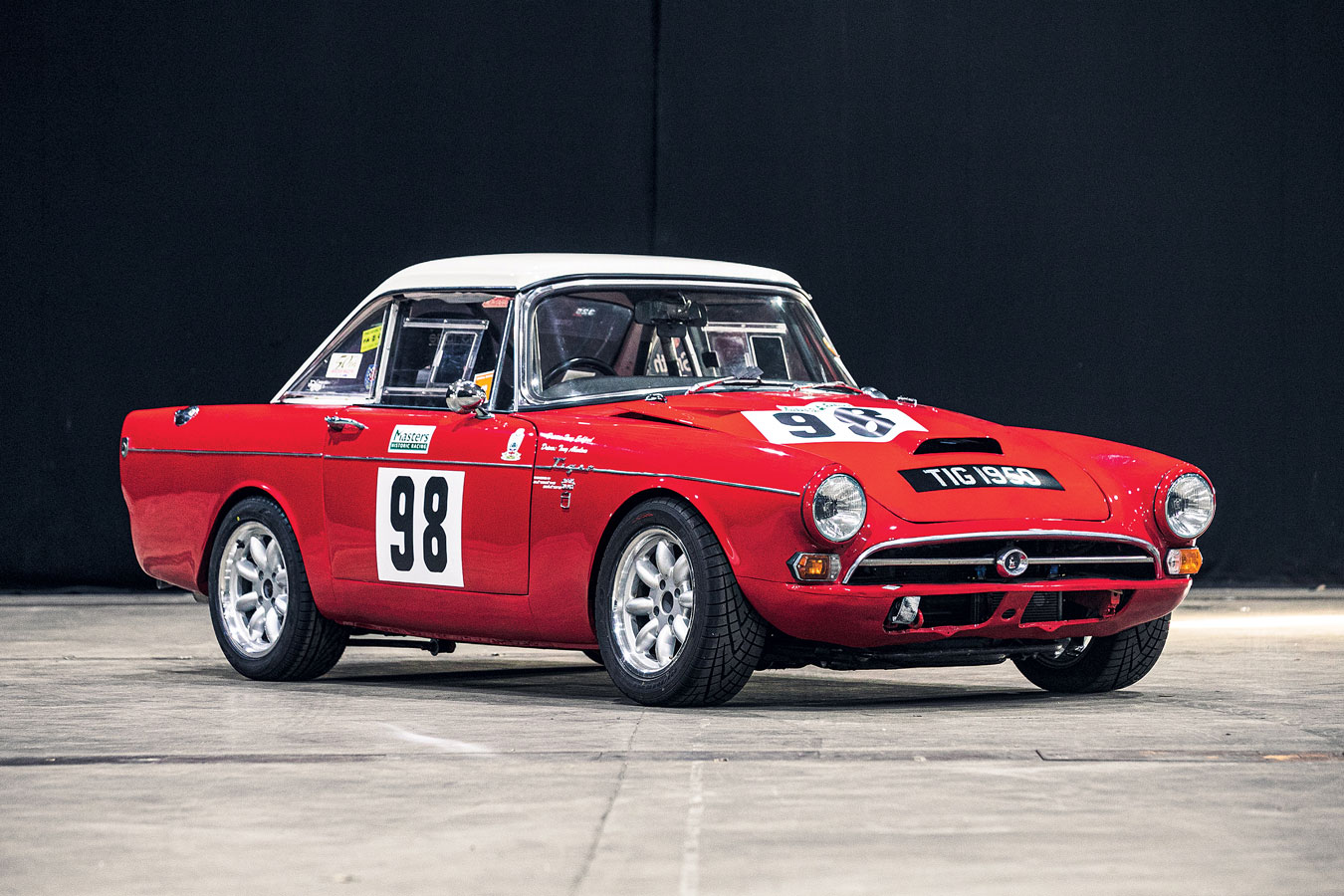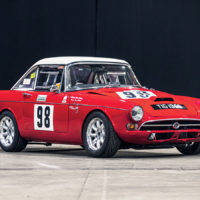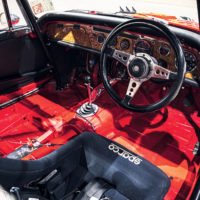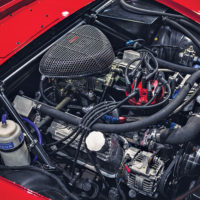SCM Analysis
Detailing
| Vehicle: | 1965 Sunbeam Tiger |
| Years Produced: | 1964–67 |
| Number Produced: | 7,128 (Mk 1 and Mk II) |
| Chassis Number Location: | On firewall |
| Engine Number Location: | On block at starter |
| Club Info: | Sunbeam Tiger Club, Sunbeam Tiger Owners Association |
| Website: | http://www.sunbeamtiger.co.uk |
| Alternatives: | 1962–65 Shelby Cobra, 1961–68 Jaguar E-Type Series 1, 1967–70 TVR Tuscan V8 |
| Investment Grade: | B |
This car, Lot 408, sold for $82,935 (£60,187), including buyer’s premium, at the Silverstone Auctions Race Retro sale on March 28, 2021.
Anyone who wants to go vintage racing in a production car needs to start with a fundamental decision: Do you care about winning?
If you do, if you are “in it to win it,” then you have to pick a car that can run at the front. If you just want to experience the joy of competition or are committed to driving a certain marque, then you should pick a car that meets your emotional or financial requirements.
The underlying reality is that some cars make great racers while others don’t. There are always things you can do to change that — the question is whether they are allowed.
Showroom rules
The whole idea of production-car racing is that it is done with cars that could be bought off the showroom floor, with certain modifications to make them suitable for racing. In the case of international competition, the production requirement (in this case 500 cars) and the allowed modifications are controlled by the FIA in Paris.
The procedure is that a manufacturer certifies the number of cars produced, then submits a form (called “homologation papers”) describing in incredible detail the car as built and any competition modifications to be made. When accepted, this becomes the bible for racing preparation.
Obviously, manufacturers who seriously want to race their cars will spend more time optimizing the specifications than those who don’t. And it is these homologation papers that FIA uses as the basis for issuing a Historic Technical Passport, required for vintage racing overseas.
Evolution of the Sunbeam
The original Sunbeam Alpine was introduced in 1959, using a modified floorpan from a Hillman Husky with underfloor “X” reinforcement, a 1,500-cc pushrod 4 making 84 horsepower, and 13-inch wheels. The brakes were nine-inch, two-pot Girling discs in front and nine-inch drums in back.
By 1965 the engine was up to 99 hp, but the basic vehicle was unchanged. It weighed 2,300 pounds and was a comfortable equivalent to an MGB.
Rootes, the parent company, worried that the Alpine didn’t have enough power for the American market. By this time Carroll Shelby had shown great success with his Cobra, so the thought of an American V8 seemed like a good idea. After some preliminary measurements (literally done with a wooden yardstick) suggested Ford’s 260-cid V8 would fit, Rootes gave Shelby a call.
He was happy to take on the project, and by early 1964 the Sunbeam Tiger came to be, though actual production was done in the U.K. by Jensen. The initial Ford 260 made 163 hp, but the car weighed about 400 pounds more than the Alpine.
Aside from the engine and transmission, the basic car was little changed from the original. The front brakes were a little bigger, but the 13-inch wheels remained. Getting the engine to 250 horses or more was easy, but there was no room for more brake or more tire. Tripling the horsepower and adding weight pushed the chassis design to its limits.
An intervention
If you think this sounds like a recipe for a great racing car, we need to talk. In fact, Rootes made no real effort at racing the Tiger, and the car’s FIA homologation was aimed primarily at rally use. Rootes did build several Tigers for Le Mans, but they were raced as prototypes, not production cars. While the car did very well in SCCA racing in the U.S., that was under a different set of rules.
The basic conundrum for a Tiger racer is this: If you build and enter an FIA-legal car, you will be welcome, but finishing even mid-pack will be an achievement. Sorry, but it’s a lousy racer.
There is a lot you can do to make a Tiger into a seriously quick competitor. For a short list, go back and look at the modifications described at the beginning of this profile. Unfortunately, none of them are FIA-legal. For power, only the 260 is allowed, as the later Ford 289 was used in the Series II Tigers, but never homologated.
I showed this car’s modification list to an FIA inspector friend and his response was, “So: wrong engine, wrong ignition, wrong brakes, wrong clutch, dubious chassis mods, wrong boot and bonnet. Wow, don’t bother to go for an HTP!”
What to do with it?
This brings us to the question of who would buy a car like this and for what purpose. A notice was initially attached to this sale stating that the car was FIA compliant and is awaiting renewal of its papers, which was later amended saying that the car “will need to be represented for new FIA papers.” However, this is clearly not an FIA-compliant racer. Someone serious and knowledgeable enough to have been a buyer had to have known that, so I doubt anyone was confused here.
This Tiger does seem to be a well-built, fun, and highly competitive racer, but under U.S. racing rules (which are different and more generous) or possibly in non-sanctioned club racing elsewhere. The spares package that came with it (including a 260 V8) could probably get the car back to FIA-legal, but why bother?
It gets down to how much somebody likes Tigers and wants to race one. They are definitely an acquired taste. The short wheelbase, lack of brakes and overpowered chassis make them challenging to drive at the limit. Yet they offer a tremendous amount of performance for the dollar and have a cachet and presence closer to far more exotic options.
As a sort of poor man’s Cobra, they are definitely cool and always crowd pleasers in the paddock. This car sold pretty much in the middle of the price range for racing Tigers, so it was fairly bought. We will see if it comes back to the U.S., where it better belongs. ♦
(Introductory description courtesy of Silverstone Auctions.)



